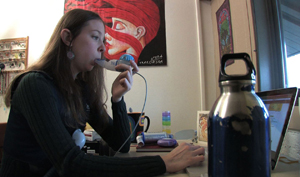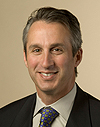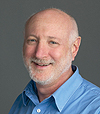February 8, 2010 - By Diane Rogers

Stanford senior Molly Pam doing her daily regimen of drugs and airway-clearing therapies to manage cystic fibrosis. She has transitioned her care to Stanford Hospital & Clinics from Packard Children’s.
In her sophomore year at Stanford, Molly Pam had a once-in-a-lifetime chance to board a research vessel for a month-long trip in the Sea of Cortez.
Taking “Holistic Biology,” an interdisciplinary course that looked at the history, biology and literature of Monterey, Calif., and Baja, Mexico, would be cool. It also would be the longest adventure she’d ever had away from home or school. “I had no phone or Internet access,” Pam recalled. “I was very much on my own in terms of my health.”
Such a trip would have been unthinkable a few decades ago for someone like Pam, who has cystic fibrosis. Most people with that disease did not live past childhood. But Pam, who is now 21, is emblematic of how cystic fibrosis is no longer fatal until well into adulthood—and how doctors have learned to manage the disease. Today the Stanford senior juggles a demanding daily regimen of drugs and airway-clearing therapies, along with course requirements and the responsibility of ordering food for Terra House, as one of the kitchen managers of the co-op.
Before leaving for the Sea of Cortez, Pam had consulted with her doctors at Stanford Hospital & Clinics about her treatment plan and how to deal with any issues that might arise. There were, however, no health complications, even though her lung function is less than half of normal capacity. Indeed, she followed that trip with a quarter abroad in Berlin, where she also remained healthy, though her Stanford doctors put her in touch with a CF specialist there, whom she did see regularly. “The only challenge was figuring out how to pay the bills and get reimbursed by my insurance,” she said.
Pam is among the dozens of CF patients who, over the last two years, have made a smooth transition from seeing a pediatric physician at Lucile Packard Children's Hospital, to getting regular care from an adult CF specialist at Stanford Hospital & Clinics. “Since the beginning of college, I have been on my own with my care,” Pam said.
Cystic fibrosis is a genetic disease of the lungs and digestive system that affects about 30,000 people in the United States. “In the 1970s, CF was a fatal pediatric disease,” David Weill, MD, director of the Adult Cystic Fibrosis Center at Stanford Hospital & Clinics, said. “But average life expectancy today is about 38 years.”

David Weill
In 1989 the discovery of a genetic mutation that causes CF raised expectations of a cure, but those hopes have faded over the past two decades, as no gene therapies have emerged. But thanks to earlier interventions with better antibiotics and anti-inflammatories, as well as new airway-clearance devices, children and adults with CF are living longer,stronger lives today. “Now we have more patients over 18 than under 18, and that’s opened a new chapter in combating this disease,” Weill said.
An associate professor in the Division of Pulmonary and Critical Care in the Department of Medicine, Weill has been medical director of the lung and lung-heart transplant program since 2006. In 2008 he was tapped to head the adult cystic fibrosis program, which opened new clinic space in Stanford Hospital’s chest center in November.
Stanford’s CF center for adults is the largest in California, with almost 200 patients, most of them graduates of the Packard CF program. By the end of February, virtually all of the Packard patients who are 18 years or older will have transitioned to seeing pulmonary specialists at Stanford Hospital.

David Cornfield
By age 18, patients such as Molly Pam, who said she is on the “low end of moderate CF,” know the daily drill. She takes Colistin, an inhaled antibiotic, and Pulmozyme, an inhaled mucus thinner, by nebulizer twice a day. That adds up to 20 minutes in the morning and 20 minutes in the evening. Pam also puts on a mechanical vest twice a day, for 20 minutes at a time, which vibrates her chest and breaks up the sputum in her lungs.
The daily skirmishes against CF are aimed at getting rid of the sticky secretions that clog the lungs. Thick mucus can lead to a buildup of bacteria in the lungs, with resulting pulmonary infections.
“I also take lots of pills and vitamins every day, plus appetite stimulants,” Pam added. “I take lighter class loads because when I get stressed, I get sick. And I eat a high-calorie diet.”
Although Pam sees her doctor every six to eight weeks for a lung-function test, she still ends up in the hospital about once a year. And four times a year, on average, she has to take antibiotics by drip IVs in her dorm.

Richard Moss
“The average patient with CF spends a couple of hours each day on their health, and that’s a terrible strain,” Richard Moss, MD, former director of Packard’s CF program, and Pam’s pediatric doctor since she was 10, said. “I think our obligation in the future is to figure out how to make that less burdensome.”
David Cornfield, MD, who directs Packard’s Center of Excellence in Pulmonary Biology, said that having a transitional program, with patients moving smoothly from pediatric doctors to adult CF physicians, “has been the hope and dream of pediatricians since the early 1990s.” Working together, he and Weill determined that the best caregivers for pediatric patients transitioning to the adult hospital would be physicians who had expertise with both CF and with lung transplantation. A transplant is not a cure for CF, but it can extend a patient’s life for a decade or more.
Although finding physicians with expertise in both fields is difficult, Weill has been joined by three specialists for SHC’s CF program: Paul Mohabir, MD; Gundeep Dhillon, MD, MPH; and Ramachandra R. Sista, MD. Completing the staff of the new program are two nurse coordinators, Kathy Gesley and Nicole Eden, and two nurse practitioners, Camille Washowich, and Elika Derakshandeh. The new director of the Packard CF center is Carlos Milla, MD.
In the Packard CF clinic, nurse coordinator Mary Helmers identifies patients who are ready to transition to Stanford Hospital, and begins coaching them about new expectations. “When you’re a pediatric patient, you get coddled, but we want to prepare teenagers to become independent,” she said. “For example, if they show up a half-hour late for an appointment at the adult clinic, they’re not going to be seen. That’s the reality of being an adult.”
Molly Pam has learned to monitor her medical appointments as rigorously as she keeps up with the demands of a major in Science, Technology and Society, and a minor in dance. On track to graduate in June, she is clear about the priorities she will have to set in the post-grad world.
“Although my parents are close by, they are not checking up on me all the time,” she said. “While I rely on my doctors for regular advice and guidance, I very much consider myself as living independently. I feel like I am as independent with my care as I will ever get.”
About Stanford Medicine
Stanford Medicine is an integrated academic health system comprising the Stanford School of Medicine and adult and pediatric health care delivery systems. Together, they harness the full potential of biomedicine through collaborative research, education and clinical care for patients. For more information, please visit med.stanford.edu.